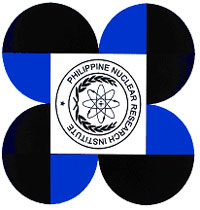Trivia about DOST and PNRI
 It was in 1958 when the Philippine Congress passed a law for the creation of the National Science Development Board (NSDB). Essentially, the National Science Development Board laid down the foundation stones of an organized national scientific development effort.
It was in 1958 when the Philippine Congress passed a law for the creation of the National Science Development Board (NSDB). Essentially, the National Science Development Board laid down the foundation stones of an organized national scientific development effort.
In 1982, the NSDB was overhauled into the National Science and Technology Authority(NSTA) to assume broader policy making and program implementing functions. The expanded structure was an attempt to meet the period’s emergent development and competitive Challenges.
Five years later, the NSTA was upgraded into its current structure following a powerful social upheaval celebrated in its non-violent temperament. The Department of Science and Technology (DOST) was created with fresh hopes of accelerating the development and deployment of technology products and services appropriate to the needs of domestic industries including SMEs.
The Philippine Atomic Energy Commission, now the Philippine Nuclear Research Institute (PNRI) was created by the Science Act of 1958, the law which established the National Science Development Board. PNRI, one of the research institutes in the DOST system, is mandated by law to undertake research and development activities and establish regulations to protect the health and safety of radiation workers and the public. Through the years, the PNRI has relentlessly pursued this mandate making the peaceful applications of nuclear technologies work of the Filipino in a safe and secure regime. Unknown to many, nuclear applications have permeated the Filipino way of life contributing to the fight against poverty, sickness, and pollution of the environment. Efforts are targeted in the areas of food and agriculture, health, water, energy and environment where nuclear and radiation technologies can make a difference, hold a comparative advantage or at times become the only solutions.
Recent Comments